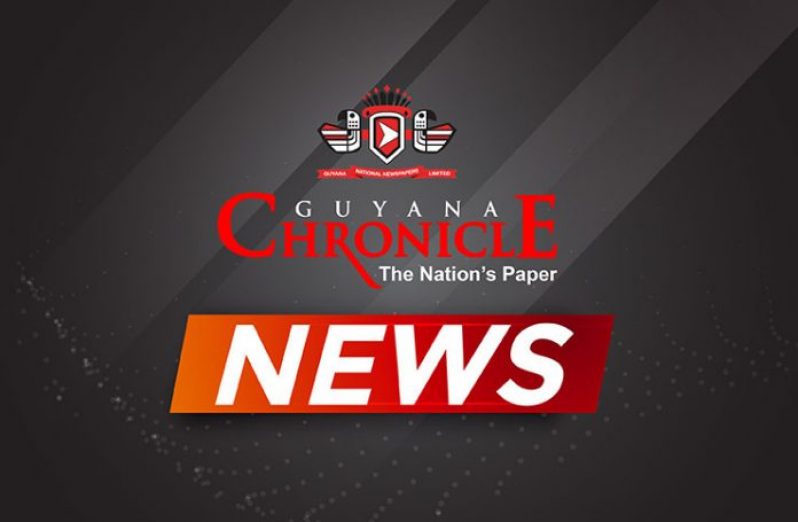Economist says easing tax burden will play a key role in rejuvenation of economy
RISING from the ashes after contending with the devastating effects of the novel coronavirus (COVID-19) and a protracted electoral process will not be easy for Guyana, but rejuvenating the local economy is not unattainable. It will have to be done in stages for there to be maximum success.
Many have argued that contraction in the local economy started in March, a month which saw Guyana taking a double hit, after the March 2 General and Regional Elections was “stretched” beyond its expected timeframe, and the country recorded its first case of COVID-19 about two weeks after Guyanese went to the polls.
Economic stability was hampered by political tension and was further exacerbated by the direct and indirect effects of COVID-19, which has so far hit over 213 countries and territories across the world.
While there is some level of control over the completion of the electoral process, there is no guarantee that the COVID-19 pandemic will “disappear” anytime soon because there is no approved cure or treatment for the disease.
Guyana has, so far, recorded 154 cases of the disease, but COVID-19 has not just killed and infected people, but has “suffocated” various sectors and by extension the entire economy. Businesses and even public sector agencies have been unable to operate routinely because of the necessary containment measures, which are in place.
“It is, therefore, unquestionable that at some point we have to reopen the economy and this process must be done in stages. Also the timing is important. Before reopening, I think we need good information from the National Task Force on COVID-19 about what is happening on the ground in order to make a sensible decision as to when we can start the reopening process,” said Head of the Department of Economics at the University of Guyana, Sydney Armstrong, in an invited comment.
Just recently, the National COVID-19 Task Force (NCTF) extended the COVID-19 Emergency Measures to June 17, 2020.
In a press release on Tuesday, the NCTF stated that the extension applies to the COVID-19 Emergency Measures (No.3) published in the Gazette on April 29, 2020. The emergency measures state that unless a citizen is conducting or visiting an essential service between the 06:00 hours and 18:00 hours, he/she is to stay within the enclosure of his/her home and yard. A number of social activities have also been prohibited.
These measures also speak sternly to specific working hours allotted to essential services, preferential treatment for healthcare workers, social and physical distancing protocols, religious worship and domestic and international travel.
“If you ask me, any reopening of the economy should be pushed back for another three weeks or so, simply because in the coming weeks you will have people returning home from different countries and there is a possibility of another wave of cases occurring and so this must be thought out properly. We all know that people can show no signs of having the virus but do have it and that’s the scary part,” Armstrong advised.
The economic rejuvenation process should start simultaneously with the reopening process, and Armstrong suggested that government should immediately think about easing the tax burden on both individual income and business profits.
This, he said, will help to stimulate economic activity and also provide individuals and businesses with adequate financial resources, which can be used to help with the fight against the spread of COVID-19. In addition to reducing the tax burden, he encouraged government to examine the creation of a stimulus package for the economy.
The economist also advised that “market time” should be extended, but vendors should ply their trade under strict guidelines. In this time, government should look at reducing vending fees because commerce will be slow for a while.
“It cannot be only about the money. Good sense must prevail across the board,” Armstrong advised.
For the education sector, the focus should be on the National Grade Six Assessment and CXC examinations. The school buildings need to be sanitised thoroughly and there needs to be a “shift system,” regarding class timing.
The Transport Sector is also important for the reopening, especially public transport. With the reopening of the economy, there will be greater demand for public transport, therefore, both passengers and transport operators need to exercise good judgement.
Those adjustments must be considered in order for Guyana to progress properly. And, from the inception, the country was regarded as the “least prepared” in the region. But, in Armstrong’s estimation, the local economy has been doing better than other economies.
It was reported that as economies continue to contract, the Economic Commission for Latin America and the Caribbean (ECLAC) has predicted that the COVID-19 pandemic will lead to the biggest economic contraction in Latin America and Caribbean region, but despite the odds, there could be light at the end of the tunnel for Guyana, which is projected to recorded an economic growth of 56.4 per cent, this year.
With the exception of Guyana, ECLAC has projected that every other country in this region will record a contraction in economic activities, this year.
Guyana, being the only country that is projected to “weather the storm” was recently warned by the World Bank that the effects of an incomplete general and regional elections, coupled with the effects of the COVID-19 pandemic and falling oil prices, could stymie the country’s potential economic boom. The World Bank in its semi-annual report said, real gross domestic product (GDP) growth at constant market prices will be 51.7 per cent.
“Guyana’s economy expanded by 4.7 per cent in 2019, with anticipated oil revenues spurring an expansion in nontraded sectors. Oil production is projected to boost GDP growth to unprecedented levels in 2020. While this could transform Guyana, there are risks, as illustrated by a still incomplete election outcome, and compounded by falling oil prices and the COVID-19 epidemic. Weak public service delivery and monitoring systems constrain the development of policies to reduce poverty and protect the vulnerable,” said the World Bank.
The International Monetary Fund (IMF), in a report last year, had said Guyana’s $4B annual GDP is expected to expand to about $15B by 2024. The financial institution had said the commencement of oil production will substantially improve Guyana’s medium and long-term outlook. Guyana is projected to be among the world’s largest per-capita oil producers by 2025.
The oil sector is projected to grow rapidly, accounting for around 40 per cent of GDP by 2024 and supporting additional fiscal spending annually of 6.5 per cent of non-oil GDP on average over the medium term, which will help meet critical social and infrastructure needs.
ECLAC had also said the Guyana Government will receive approximately 14.5 per cent of all oil revenue in 2020.



.jpg)








